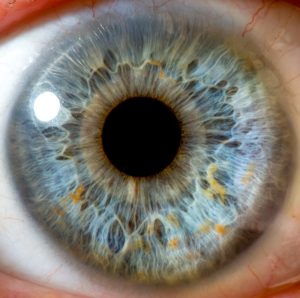 Written by Veronica Turner
Written by Veronica Turner
The rapidly evolving online landscape is opening up new avenues for healthcare businesses to connect with their prospective clients. Making the most of these opportunities calls for implementing the best practices when marketing healthcare services online.
This article will delve into these and other effective techniques to navigate the digital marketing world in the healthcare industry. Get ready to master how to market your healthcare business.
10 Best Practices When Marketing a Healthcare Business Online
Online or digital marketing can be a challenge for any business, but if you work in healthcare, you’ll need more empathetic strategies that work well with patients. Here’s how to do just that.
-
Work With a Marketing Agency
Managing an effective healthcare digital marketing strategy can be a complex task. If you’re feeling overwhelmed, consider working with a dedicated marketing agency. Professionals in these agencies have the expertise and resources to navigate the intricacies of online marketing.
They understand consumer behavior trends, algorithm changes, and how to make your content stand out among competitors. They can ensure your marketing efforts bring substantial results.
-
Research and Identify Your Target Audience
The process of understanding your audience begins with identifying who might be interested in your services. From that point, you have the foundation to dig deeper into understanding the specifics about these prospective clients, like demographics or typical health concerns.
This valuable information can then be used to tailor your marketing strategy. A clear view of your target audience allows you to align your offerings better with their needs and expectations.
-
Optimize Website for SEO
Search engine optimization (SEO) allows your site to appear prominently in search results on platforms like Google when someone searches for services you offer. Prominence is achieved through relevant keywords, regular content updates, and ensuring a user-friendly site design.
A well-executed SEO strategy can significantly expand the online visibility of your business, leading more potential clients to discover and engage with your healthcare services.
-
Offer Omnichannel Customer Support
Omnichannel support gives prospective patients and clients the flexibility to choose their preferred method of communication, be it through email, phone, live chat, or social media.
By ensuring that help is readily available across these channels, your business can meet customers where they’re most comfortable. Plus, fostering an atmosphere of consistent support helps establish trust with potential clients, a key factor when choosing a healthcare provider.
-
Invest in High-Quality Healthcare Content
High-quality content involves creating informative, accurate, and engaging articles or social media posts on relevant health topics. Such content establishes your business as a reliable source of information and helps with search engine rankings when optimized for keywords.
Moreover, creating quality content that provides value to readers can increase website traffic, enhance your brand’s reputation, and position your healthcare firm as an industry leader.
-
Leverage Social Media Platforms
Social media platforms, including Facebook, TikTok, Pinterest, and Instagram, amongst others, offer high visibility among potential customers. Through them, you can engage with your audience directly by sharing relevant information and updates about your services.
Social media also offers the opportunity to amass organic reach through posts or advertisements. Furthermore, using these platforms gives your brand a human touch.
-
Invest in Online Paid Advertising
Platforms such as Google Ads or social media ads allow you to place your healthcare business prominently in front of potential clients who are searching for the services you provide.
When combined with a solid SEO strategy, paid ads make your online presence more robust and searchable. Just remember to keep track of your return on investment (ROI) for each ad campaign to determine their effectiveness. This will allow you to adjust strategies accordingly.
-
Localize Your Online Presence
Localizing your online presence is particularly important if you operate in specific geographic areas. For instance, optimizing your website content and SEO for local keywords or using location-based ad targeting features on platforms like Google can help reach people near you.
Registering with Google My Business is another excellent strategy for visibility. A well-localized online presence ensures that you’re reaching potential clients within range of your services.
-
Gain Reviews And Testimonials
Positive reviews from past or current clients help promote trust in your services among potential customers. Therefore, encourage satisfied patients to leave reviews or testimonials about their experiences on relevant platforms like Yelp, Google Reviews, or even your own website.
A slew of positive feedback can make a difference to someone considering your services. Moreover, rich and frequent customer endorsements could also improve local SEO ratings.
-
Try Email and Referral Marketing
By gathering email addresses from your website visitors, you can build direct correspondence with them, sharing customized health advice, tips, and updates about your services.
Additionally, a referral program encourages satisfied patients to refer their friends or family to your healthcare business. A well-crafted email marketing strategy coupled with an incentivized referral system could be the winning combination for your healthcare business’s growth.
In Conclusion…
Now that you’re equipped with essential digital marketing strategies for healthcare businesses, it’s time to put these tools into action! Successful marketing isn’t a one-size-fits-all activity. It requires adapting strategies to your unique set of services and the needs of your patients.
Author Bio:
Veronica Turner is a health and lifestyle writer with over 10 years of experience. She creates compelling content on nutrition, fitness, mental health, and overall wellness.
Please also review AIHCP’s professional certification programs and see if it meets your academic and professional goals. These programs are online and independent study and open to qualified professionals seeking a four year certification.

 Written by Daniel Martin
Written by Daniel Martin
 Written by Veronica Turner
Written by Veronica Turner Written by Veronica Turner
Written by Veronica Turner Written by Veronica Turner
Written by Veronica Turner Written by Veronica Turner
Written by Veronica Turner Written by Veronica Turner
Written by Veronica Turner





 Dentistry
Dentistry Optometry
Optometry Doctor of Medicine (MD)
Doctor of Medicine (MD)